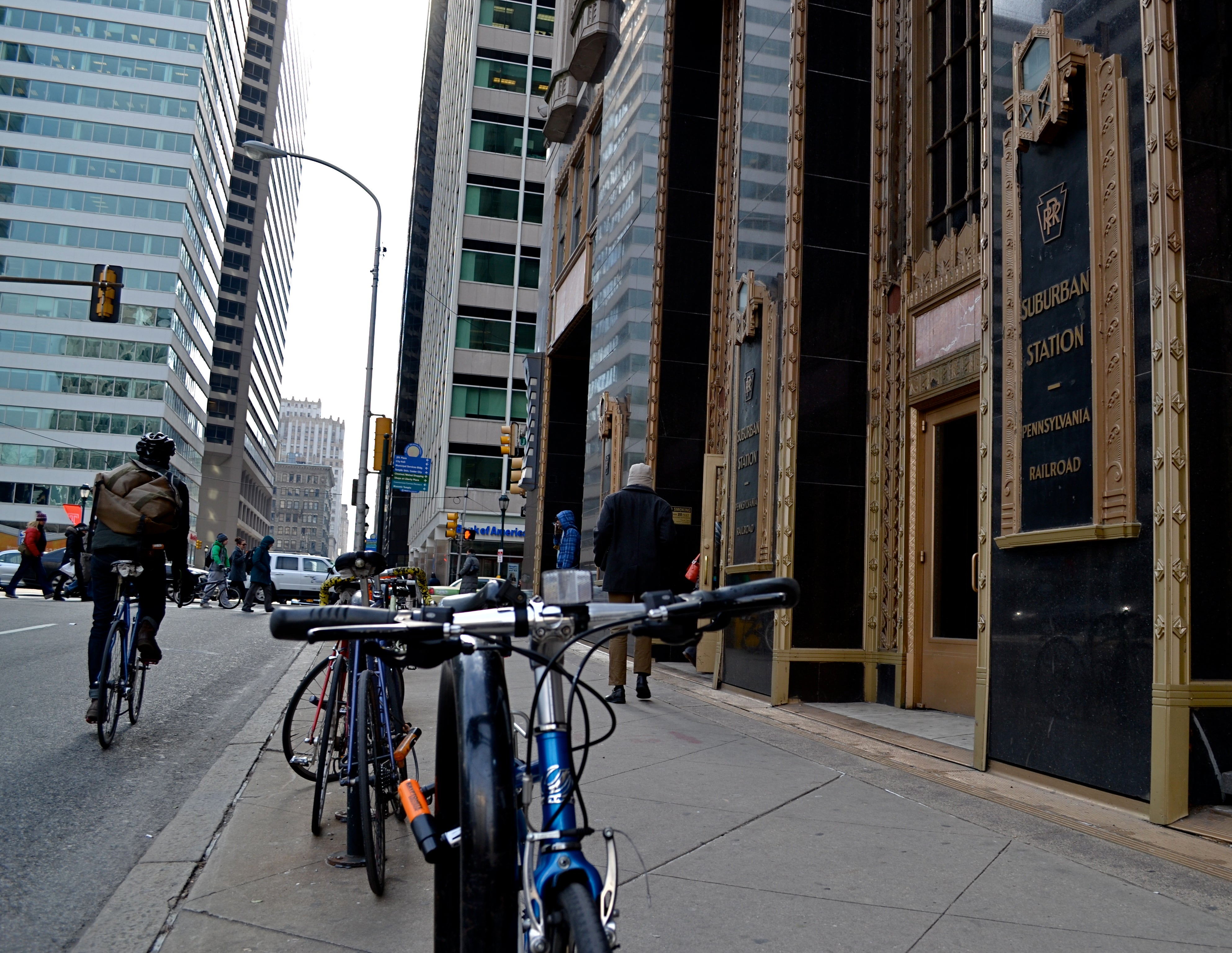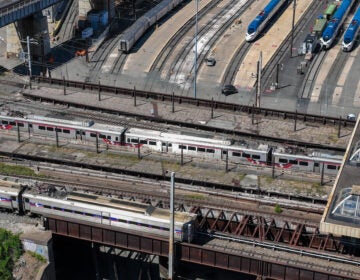SEPTA’s bicycle policy, amenities cause confusion

Fewer than half of regional rail riders know where to secure a bicycle on a SEPTA train and only about half know how to find out if a station has bike racks. Those are some of the findings from a recent passenger survey by SEPTA’s Citizen Advisory Committee (CAC).
The survey, which was available online in November and was completed by 622 people, found that two-thirds of riders know when it is okay to bring a bicycle on a regional rail train, but fifty-seven percent said they are unsure where to secure a bicycle.
“This all goes back to 1991 when we got [bicycles] access to SEPTA trains with a special permit,” said John Boyle, research director at the Bicycle Coalition of Greater Philadelphia.
“… The permit went away but the rules didn’t,” he said. “It’s pretty complicated, so I understand why people aren’t totally sure where to put their bikes.”
Bike & Ride Rules
According to the current “Bike & Ride” regional rail rules, two bicycles are allowed per car, and bicycles must be stored in areas designated as priority seating for persons with disabilities. If a designated area is occupied or if a priority seating passenger boards after a bicyclist, the bicyclist must find another designated area or leave the train in exchange for a “continuation of trip” voucher.
It gets slightly more complicated when peak and off peak hours are taken into account.
Bicycles are not allowed on weekday regional rail trains traveling inbound between 6 a.m. and 9:30 a.m. or traveling outbound between 4 p.m. and 6:30 p.m. They are not allowed on the Broad Street or Market-Frankford lines weekdays between 6 a.m. and 9 a.m. or 3 p.m. and 6 p.m.
Folding bicycles are allowed on all vehicles at all times.
Matthew Mitchell, president of the Delaware Valley Association of Rail Passenger (DVARP), said that most of the regional rail commuters are pretty well aware of the rules during peak hours.
“The complaints we hear usually have to do with bicyclists who are not following the rules [on the Market-Frankford Line during peak hours],” Mitchell said.
Not only do bicycles on peak-hour Market-Frankford Line trains block up to six seats and standing room but they delay the train from leaving the platform because it takes longer for other passengers to board and exit the train, Mitchell said.
Miscommunication
Both Boyle and Mitchell said there have been instances where regional rail conductors are unaware of the rules and add to the confusion.
Some conductors still think the rule is two bicycles per train when it is two bicycles per car, Boyle said.
“In the end it’s really up to the crews whether they let you carry your bike or not,” he said.
The CAC regional rail subcommittee, which led the passenger survey, said the results are not bad considering that not all riders use bicycles on trains.
“But given the investment that SEPTA has made in making the system more accessible to cyclists, it should continually evaluate the availability of its bicycle information to ensure maximum reach,” wrote Philip Dawson in a letter to SEPTA officials on behalf of the subcommittee.
Bicycle Parking
Only about half of the survey respondents said they knew how to find out if a given station has bicycle parking.
That information is listed under “Station Amenities” on each station’s SEPTA webpage.
This past fall SEPTA worked with the Bicycle Coalition, Delaware Valley Regional Planning Commission (DVRPC) and other area transit organizations to gather info on which transit stations need, among other bike infrastructure improvements, more bicycle parking. That info was crowd sourced through an online map-based survey.
The information is being used as part of a DVRPC “trails to transit” project, which will look at bike-transit connections. That is a fiscal year 2013 project, and DVRPC hopes to have a completed draft this summer.
But simply adding bicycle racks or making the information more accessible may not totally change user behaviors.
“Even if you put bike parking at all of the stations, the passengers aren’t necessarily going to use it,” Mitchell said.
He explained that most people will do whatever is easiest, whether that is hitch their bike to a fence or a sign post or secure it in a bicycle rack.
Improvements
As the CAC regional rail subcommittee noted in its letter to SEPTA officials, SEPTA has made the system more accessible to cyclists.
The Bicycle Coalition has been working with SEPTA on these issues for years, and Boyle said “SEPTA has done an honorable job over the last 20 years.”
One major improvement has been the Silverliner V fleet, which features folding seats in the priority seating areas and thus offers more space for both wheelchairs and bicycles. Having the doors in the middle of each car is also more conducive, Mitchell said.
“The Silverliner Vs are a whole lot more bike friendly because you don’t have to maneuver through a vestibule,” he said.
The Bicycle Coalition hopes that with the addition of the next generation of rail cars, SEPTA’s regional rail system will become even more bike friendly.
The Bicycle Coalition would also like to see SEPTA make improvements by adding more bicycle racks, more high-level platforms and better signage indicating the rules. Boyle said the group also hopes SEPTA will consider simplifying the rules and narrowing the rush hour times when bicycles are not permitted on the system.
WHYY is your source for fact-based, in-depth journalism and information. As a nonprofit organization, we rely on financial support from readers like you. Please give today.




